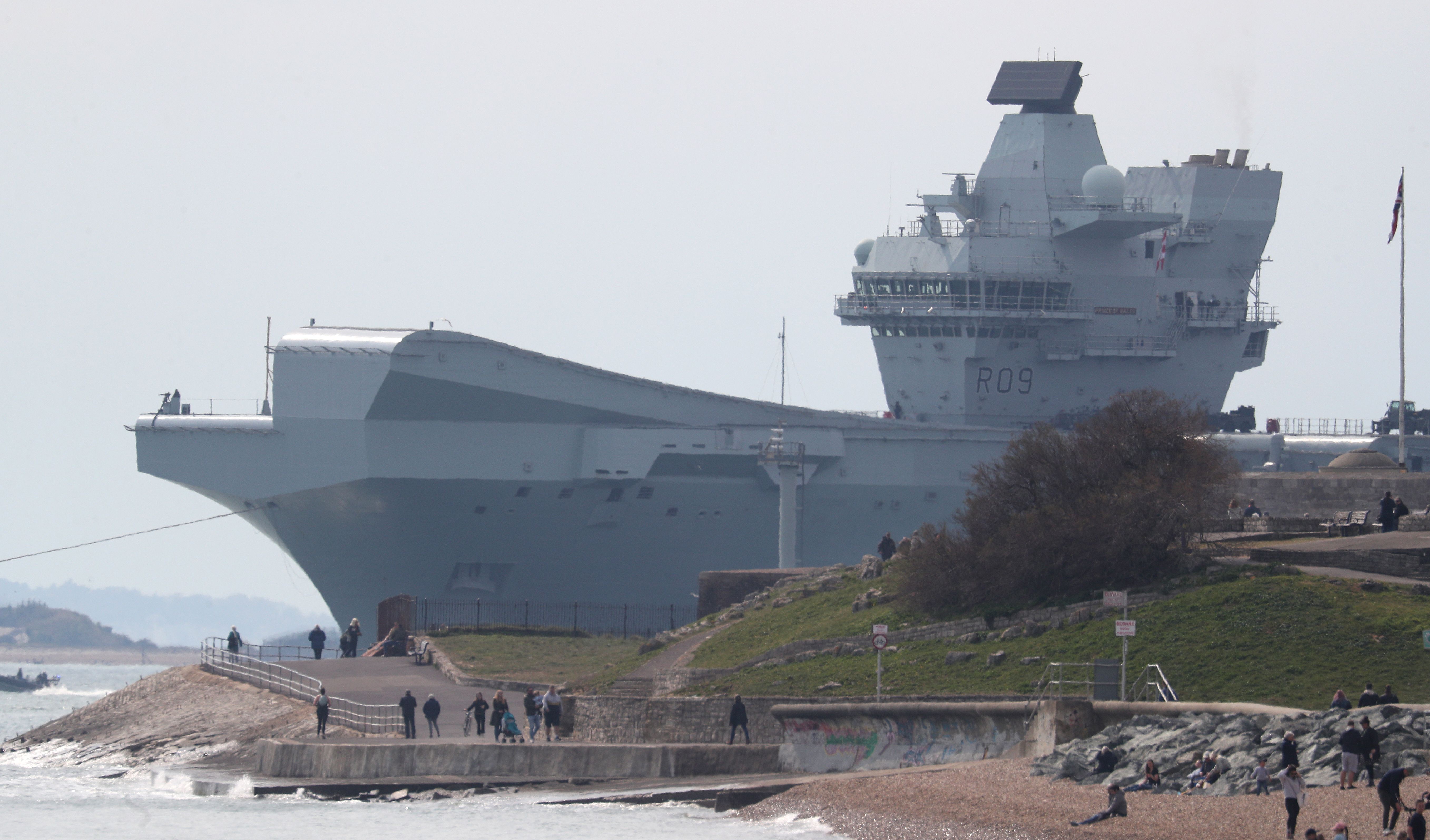British Defence Strategy: Importance for NATO’s Eastern Flank

May was the symbolic beginning of the UK’s growing global military activity. One of two new aircraft carriers set sail across the Mediterranean Sea to the Middle East and the Indo-Pacific region, and a group of landing ships was deployed to the Baltic Sea. The change in British policy was announced in the “Integrated Review of Security, Defence, Development and Foreign Policy: Global Britain in a Competitive Age,” which was published on 16 March. Tasks and plans for the transformation of the British armed forces were further developed in the “Defence Command Paper” published on 22 March.
Main Assumptions of Defence Policy
The UK defence strategy highlights the deteriorating security environment in the world. Russia is perceived as the greatest threat to Europe, and the rise of China as a global challenge. It points out that both countries strengthen their ability to conduct open warfare and operate just below that threshold through military (e.g. intimidation by threat of force) and non-military (e.g., disinformation, economic pressure) instruments. Pointing to a narrowing of the military and technological advantage of Western states, the strategy mentions the expansion of the navy by China and submarine forces by Russia, as well as the development by those countries of long-range precision missiles and air-defence systems, which could hinder Britain’s operations in defence of its interests. British authorities also warn against threats in cyberspace and space, as well as the development of next-generation technologies (e.g., artificial intelligence) and the proliferation of advanced weapons systems. Terrorist groups were also classified as threats, although they were devoted much less attention than in previous documents. The threats from Iran and North Korea are also lower on the list of priorities.
The new strategy emphasises the modernisation of the armed forces, including the use of the latest technologies and close coordination of activities in all five domains: land, sea, air, space, and cyberspace. Investments are to be financed in part by increasing defence spending (an additional £24 billion has been planned for this purpose in 2021-2025, and a total of £188 billion), but also by reducing military personnel and certain types of equipment. The defence strategy presents NATO (on par with cooperation with the U.S.) as the bedrock of the security of the UK and the entire Euro-Atlantic area. Nevertheless, it also underlines the importance of other regions, especially the Indo-Pacific, as well as Africa and the Middle East. Britain is to increase military activity in all of these areas to strengthen deterrence, cooperation with allies, and the ability to respond quickly to threats.
Modernisation of the Armed Forces and Contribution to NATO
The UK wants to maintain its position as one of the most important NATO members. It announced that it will bring significant capabilities to combat both traditional and new threats, emphasising the importance of collective defence. It is also expected to increase participation in exercises with allies and maintain the commitment to Alliance initiatives, including a battalion battle group in Estonia (as a framework nation) and Poland.
Large investments are to be made in cyber capabilities (the UK declares readiness to use offensive capabilities in defence of NATO states) and telecommunications and reconnaissance satellites. Of the traditional armed forces, the strategy seems to prioritise the navy. It is to be not only modernised but also expanded, although the number of frigates and destroyers will be initially cut from 19 to 17 and then rise to 24 in the 2030s. The strategy emphasises the key role of naval forces in securing the North Atlantic, which is crucial for the ability to send U.S. support to Europe. They are also to enable the projection of force on NATO flanks and be ready to contribute a strike group with one of the two UK aircraft carriers and one of the two new Littoral Response Groups with landing ships for the needs of the Alliance.
On the other hand, permanent cuts await the Army, which will decrease from 76,000 to 72,500 soldiers (vs. the 82,000 planned in 2015). Their capacity to support NATO will continue to include primarily the headquarters of the Allied Rapid Reaction Corps (ARRC) and the heavy division. The latter will, however, probably consist of not three, as previously assumed, but two heavy brigades, as 79 out of 227 Challenger tanks will be withdrawn. The remaining tanks are scheduled to undergo an upgrade (delayed) by 2030. In addition, the Warrior tracked infantry fighting vehicle upgrade plan has been discontinued and all 770 will be phased out. They are to be replaced by the lighter wheeled Boxer armoured personnel carrier in the middle of the decade. On the other hand, the capabilities for reconnaissance, electronic warfare, precision strike artillery and missiles, and air defence are to be strengthened. British equipment storage facilities in Germany will be expanded to increase the readiness of armed forces deployment in Europe. New special forces and training units will be created to increase global presence as well as the ability to react quickly and support the development of partner states’ potential.
The strategy provides for the purchase of new planes and helicopters and the modernisation of existing platforms, but through at least a temporary reduction in their number. In the 2030s, the British 6th-generation Tempest fighter and its supporting drones are expected to enter service, but 24 of the 131 Typhoons will be retired by 2025. The strategy does not specify the target number of F-35 fighters in addition to the 48 aircraft already ordered. Britain is expected to have more reconnaissance and strike drones, but fewer manned reconnaissance and transport aircraft.
British nuclear forces will continue to be a contribution to NATO. The plan to replace four ships with ballistic missiles with new ones is ongoing. Instead of the planned reduction of the number of nuclear warheads from 225 to 180, the count may increase to 260. The British government suggests several reasons for this move, including the expansion of nuclear arsenals by Russia and other countries and strengthening of Russian missile-defence systems.
Conclusions and Recommendations
The exact implications of the new UK defence strategy are not clear, partially because not all plans are precise The reduction of armoured capabilities will be disadvantageous for the Eastern Flank, but taking into account earlier delays in their modernisation, the implementation of the new plans can make the forces better adapted for defence against Russia. Although they are to be smaller and lighter, they are also to be more advanced and supplemented with additional capabilities. At the same time, the role of other armed services, especially the navy, will relatively increase as part of overall British contribution to NATO (not only to the defence of the Eastern Flank). However, it is not entirely clear how their ability to respond in Europe will be affected by increased global engagement, especially with the expected reduction in the number of ships and aircraft in the coming years. For example, while the permanent maritime presence in the Indo-Pacific region will be limited to smaller patrol ships, second of the two Littoral Strike Groups and a frigate, the Carrier Strike Group assigned to NATO will also participate in periodic deployments in this area.
Despite these ambiguities, it is in Poland’s interest to enhance the ability to conduct joint operations with the United Kingdom, a state unequivocally declaring its willingness to strengthen deterrence of Russia. Moreover, the changes introduced by the UK to planned operational concepts and weapons systems are consistent with the changes taking place in the U.S. and NATO. It could be mutually beneficial for Poland to join the UK-led Joint Expeditionary Force (JEF), which primarily supports the ability to react quickly in the region of Northern Europe and the Baltic Sea. This would give Poland additional opportunities to build interoperability with various types of British forces, including naval and landing forces, whose importance in British defence policy is to be even greater than before.



